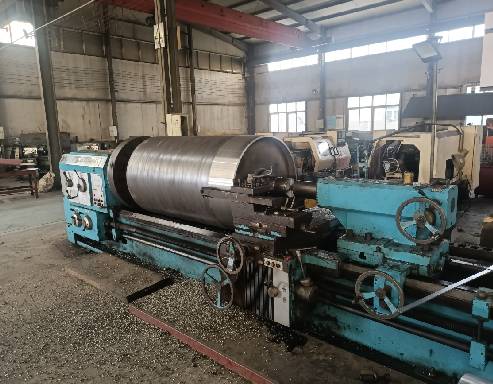 Afrikaans
Afrikaans  Albanian
Albanian  Amharic
Amharic  Arabic
Arabic  Armenian
Armenian  Azerbaijani
Azerbaijani  Basque
Basque  Belarusian
Belarusian  Bengali
Bengali  Bosnian
Bosnian  Bulgarian
Bulgarian  Catalan
Catalan  Cebuano
Cebuano  Corsican
Corsican  Croatian
Croatian  Czech
Czech  Danish
Danish  Dutch
Dutch  English
English  Esperanto
Esperanto  Estonian
Estonian  Finnish
Finnish  French
French  Frisian
Frisian  Galician
Galician  Georgian
Georgian  German
German  Greek
Greek  Gujarati
Gujarati  Haitian Creole
Haitian Creole  hausa
hausa  hawaiian
hawaiian  Hebrew
Hebrew  Hindi
Hindi  Miao
Miao  Hungarian
Hungarian  Icelandic
Icelandic  igbo
igbo  Indonesian
Indonesian  irish
irish  Italian
Italian  Japanese
Japanese  Javanese
Javanese  Kannada
Kannada  kazakh
kazakh  Khmer
Khmer  Rwandese
Rwandese  Korean
Korean  Kurdish
Kurdish  Kyrgyz
Kyrgyz  Lao
Lao  Latin
Latin  Latvian
Latvian  Lithuanian
Lithuanian  Luxembourgish
Luxembourgish  Macedonian
Macedonian  Malgashi
Malgashi  Malay
Malay  Malayalam
Malayalam  Maltese
Maltese  Maori
Maori  Marathi
Marathi  Mongolian
Mongolian  Myanmar
Myanmar  Nepali
Nepali  Norwegian
Norwegian  Norwegian
Norwegian  Occitan
Occitan  Pashto
Pashto  Persian
Persian  Polish
Polish  Portuguese
Portuguese  Punjabi
Punjabi  Romanian
Romanian  Russian
Russian  Samoan
Samoan  Scottish Gaelic
Scottish Gaelic  Serbian
Serbian  Sesotho
Sesotho  Shona
Shona  Sindhi
Sindhi  Sinhala
Sinhala  Slovak
Slovak  Slovenian
Slovenian  Somali
Somali  Spanish
Spanish  Sundanese
Sundanese  Swahili
Swahili  Swedish
Swedish  Tagalog
Tagalog  Tajik
Tajik  Tamil
Tamil  Tatar
Tatar  Telugu
Telugu  Thai
Thai  Turkish
Turkish  Turkmen
Turkmen  Ukrainian
Ukrainian  Urdu
Urdu  Uighur
Uighur  Uzbek
Uzbek  Vietnamese
Vietnamese  Welsh
Welsh  Bantu
Bantu  Yiddish
Yiddish  Yoruba
Yoruba  Zulu
Zulu Understanding Conveyor Training Idlers for Efficient Material Handling Systems
Understanding Conveyor Training Idlers Importance and Functionality
Conveyor systems are integral to various industries, enhancing the efficiency of material transport. A crucial component of these systems is the training idler, which plays a significant role in maintaining the proper alignment and operation of conveyor belts. In this article, we will explore what conveyor training idlers are, their functions, and their importance in ensuring the smooth operation of conveyor systems.
What are Conveyor Training Idlers?
Conveyor training idlers, also known as training rollers or tracking idlers, are specially designed rollers positioned along the conveyor frame. Their primary function is to keep the conveyor belt centered and to prevent it from wandering off track during operation. These idlers are strategically placed to exert lateral force on the belt when it begins to deviate from its intended path, effectively nudging it back into position.
The Importance of Training Idlers
The significance of training idlers cannot be overstated. They serve several important purposes
1. Prevention of Belt Misalignment One of the most common issues in conveyor systems is belt misalignment. Misalignment can lead to various issues, including increased wear on the belt, reduced efficiency, and in severe cases, complete system failure. Training idlers help to mitigate these risks by ensuring that the belt remains aligned throughout its operation.
2. Reduction of Material Loss Conveyors transport materials from one point to another, and any deviation in the belt can cause materials to spill or fall off the conveyor. This not only results in material loss but can also create hazardous situations in the workplace. By correcting misalignment, training idlers minimize the risk of material loss.
3. Increased Equipment Longevity A well-aligned belt operates more efficiently, which, in turn, places less stress on the entire conveyor system. When training idlers are utilized effectively, they reduce unnecessary friction and wear on the belt and other components. This leads to decreased maintenance costs and extends the lifespan of the conveyor system as a whole.
4. Enhanced Safety An off-track conveyor belt can pose serious safety risks to operators and nearby personnel. Training idlers contribute to a safer working environment by ensuring that the conveyor operates smoothly, reducing the likelihood of accidents caused by misaligned equipment.
Types of Training Idlers
conveyor training idlers

There are several types of training idlers available, each designed to cater to specific operational needs
1. Adjustable Training Idlers These idlers can be adjusted to change the angle or position to correct the belt’s alignment. They are versatile and can be used in various applications.
2. Self-Training Idlers As the name suggests, these idlers automatically correct the belt misalignment without needing manual adjustments. They are often more reliable and reduce the need for constant monitoring.
3. Fixed Training Idlers These are non-adjustable and provide a stable solution for training belts that operate in predictable environments. While they may not offer the flexibility of adjustable models, they are highly effective in certain applications.
Best Practices for Installation and Maintenance
To fully leverage the benefits of conveyor training idlers, proper installation and maintenance are key. Here are some best practices
- Correct Placement Ensure that training idlers are installed in the correct locations along the conveyor. Typically, these rollers should be placed at the beginning of the conveyor section where misalignment is likely to occur.
- Regular Inspections Regularly inspect training idlers for wear and tear. Any damaged or worn components should be replaced promptly to prevent further issues.
- Alignment Checks Perform routine checks on the alignment of the conveyor belt and adjust the training idlers as necessary to maintain optimal performance.
Conclusion
Conveyor training idlers are vital components that contribute significantly to the efficiency and safety of conveyor systems. By preventing belt misalignment, reducing material loss, and extending equipment lifespan, these idlers play an essential role in the reliability and effectiveness of material handling operations. Understanding their function and ensuring proper installation and maintenance can greatly enhance the overall performance of conveyor systems.
-
Revolutionizing Conveyor Reliability with Advanced Rubber Lagging PulleysNewsJul.22,2025
-
Powering Precision and Durability with Expert Manufacturers of Conveyor ComponentsNewsJul.22,2025
-
Optimizing Conveyor Systems with Advanced Conveyor AccessoriesNewsJul.22,2025
-
Maximize Conveyor Efficiency with Quality Conveyor Idler PulleysNewsJul.22,2025
-
Future-Proof Your Conveyor System with High-Performance Polyurethane RollerNewsJul.22,2025
-
Driving Efficiency Forward with Quality Idlers and RollersNewsJul.22,2025





























